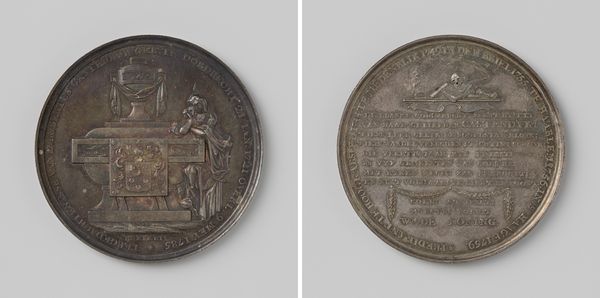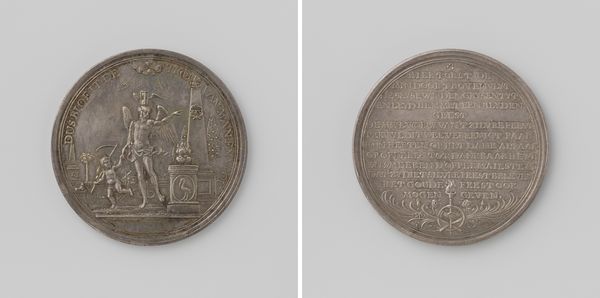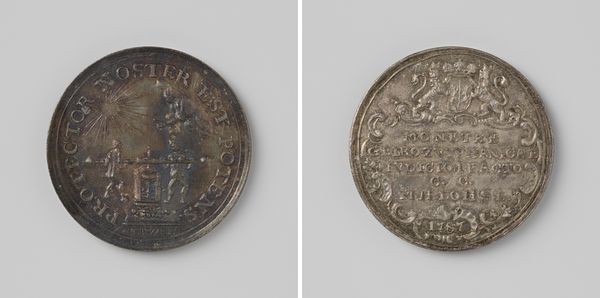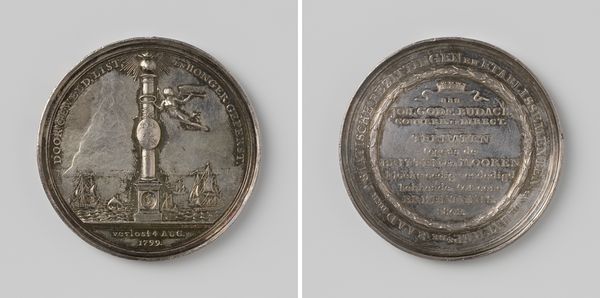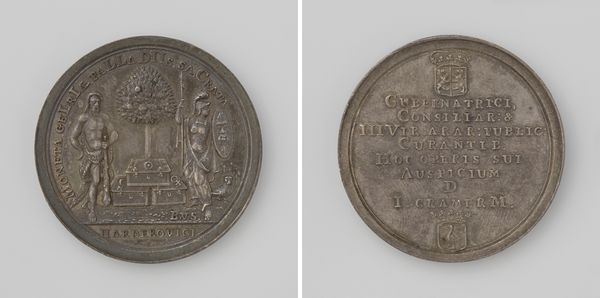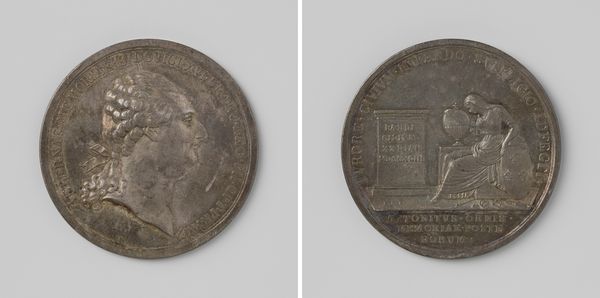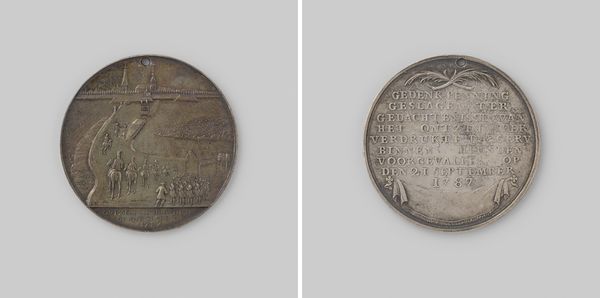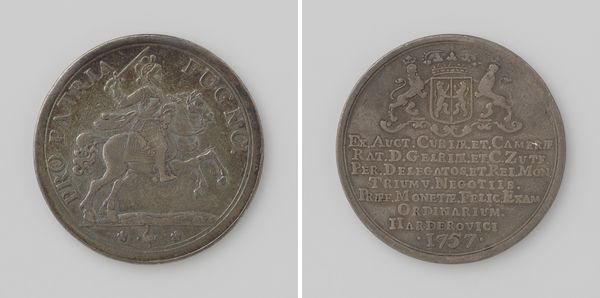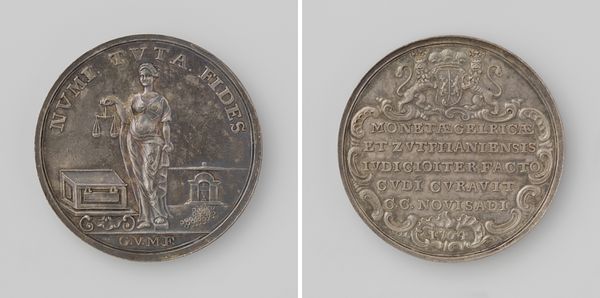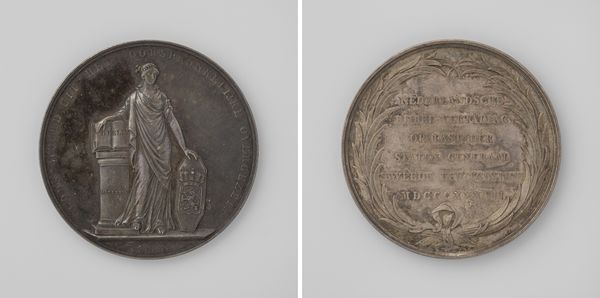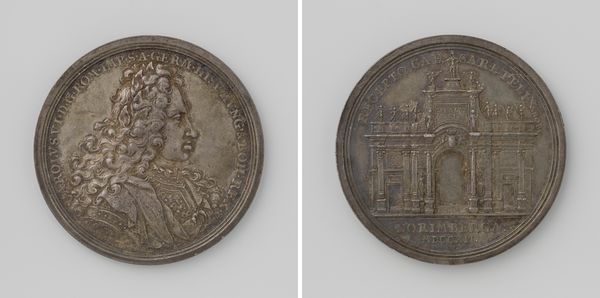
print, metal, relief, sculpture, engraving
#
portrait
# print
#
metal
#
sculpture
#
relief
#
classical-realism
#
sculptural image
#
sculpture
#
engraving
Dimensions: diameter 3.9 cm, weight 22.95 gr
Copyright: Rijks Museum: Open Domain
Curator: Looking at “Nazien van de munt van Harderwijk,” dating to 1762, created by Carel Christiaan Novisadi, the immediate feeling is... stern. There is this imposing figure and weighty inscriptions that evoke formality. What is your first impression? Editor: It is impressive – materially. You feel the work in its crafting; the silver or pewter that has been pressed and etched to create such dimensionality in relief. You can easily imagine the workshop, the tools used, and the sheer physical labour to imprint such detail. Curator: Absolutely. The symbolic language is quite direct, however. We see Mercury, the god of commerce, prominently displayed next to the caduceus on one side. This instantly telegraphs messages about trade and prosperity. Editor: And that text surrounding Mercury – "COMMERCIA DITANT POPULUM.” Commerce enriches the people – no subtlety there! But thinking about the social context, this wasn’t merely an aesthetic choice. Metal currency at this moment reflects complex social relationships. Curator: Exactly. It’s more than an advertisement; the image carries the weight of aspiration and perhaps even anxieties related to economic stability of the province Gelderland. Note, the reverse of the coin features a regal crest with lions rampant above dense Latin script—very official. Editor: That’s an excellent point; the inscriptions aren’t just ornamentation, they signify ownership, law, the value encoded in the materiality. Currency makes concrete relationships of labor, power and class. To hold one in hand must have communicated a sense of belonging, perhaps pride. Curator: I agree; the entire object operates like an emblem. The imagery offers viewers a visual shortcut, a concise reminder of the foundations of society and belief, and yes, encoded values of civic pride at a particular time in Harderwijk's history. Editor: The more one reflects upon it, the more apparent is how something that might appear quotidian is laden with the hopes and relationships between making, distribution, trade, governance – pretty amazing when you consider its scale. Curator: It certainly prompts one to look beyond the immediately visible to uncover layers of history. Editor: Yes, it gives you real insights into how power takes shape!
Comments
No comments
Be the first to comment and join the conversation on the ultimate creative platform.
